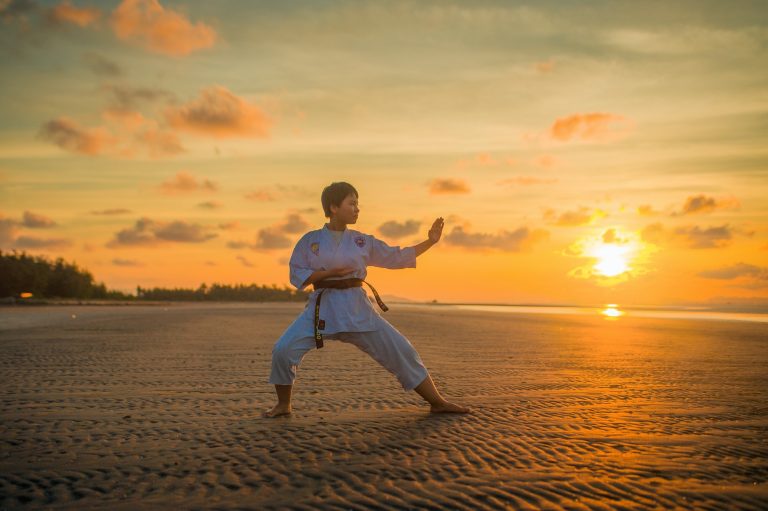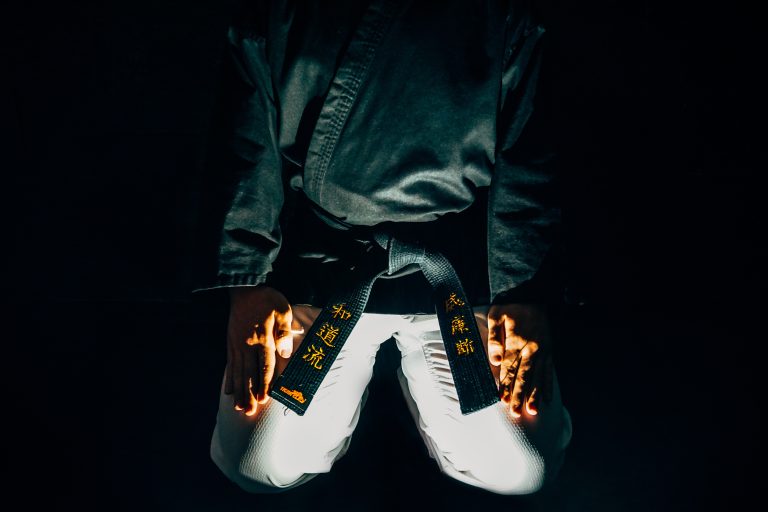What Does The Word Karate Mean?
Karate is a martial art that originated in Okinawa, Japan during the Ryukyu Kingdom period. Today, karate has become popular all over the world, with millions of people practicing it for fitness, self-defense, and sport. But have you ever wondered what the word karate actually means? In this blog post, we will explore the history of karate and the meaning behind the word.
The History of Karate
Karate is a martial art that originated in Okinawa, Japan in the 14th century. At that time, Okinawa was a kingdom that was situated at the crossroads of trade routes between China and Southeast Asia. The Okinawan people developed their own fighting styles based on influences from the Chinese martial arts and indigenous Okinawan martial arts.
Over time, these fighting styles evolved into what we now know as karate. In the early 1900s, karate was introduced to the Japanese mainland and later spread to other parts of the world. Today, there are many different styles of karate, each with its own unique techniques and philosophies.
The Meaning of Karate
The word karate is composed of two Japanese characters: kara (空) and te (手). Kara means „empty,“ and te means „hand.“ Therefore, karate can be translated to mean „empty hand.“ But what does “empty hand” actually mean?
One interpretation of the term is that karate is a form of self-defense that does not require weapons. In feudal Japan, weapons such as swords were banned for common people. Therefore, the Okinawan people learned to defend themselves using only their hands and feet. Thus, karate became known as an „empty hand“ martial art.
Another interpretation of the term is that karate involves using the body and mind together as a single unit. In karate, the practitioner must focus their mind and spirit in addition to using their hands and feet to strike and defend. By doing so, the karateka (practitioner of karate) develops a sense of unity between their body and mind.
The Different Styles of Karate
As previously mentioned, there are many different styles of karate. Some of the most popular styles include Shotokan, Goju Ryu, Shito Ryu, and Kyokushin. Each style has its own unique techniques, kata (forms), and philosophies.
Shotokan is one of the most popular styles of karate and is known for its powerful strikes and deep stances. Goju Ryu, on the other hand, places a strong emphasis on breathing techniques and close-range combat. Shito Ryu is a style that combines elements of both Shotokan and Goju Ryu. Finally, Kyokushin karate is known for its intense full-contact sparring and emphasis on physical conditioning.
The Benefits of Practicing Karate
Practicing karate offers many benefits, including physical fitness, self-defense skills, and mental discipline. Karate is a great way to improve cardiovascular health, strength, and flexibility. The self-defense skills that you learn in karate can help you stay safe in dangerous situations. Additionally, practicing karate can improve mental discipline and focus, which can be applied to other areas of your life.
What Does the Word Karate Mean?
If you’ve ever seen an action movie or martial arts demonstration, then you’ve likely heard of the term „karate.“ Karate is a martial art that originated in Okinawa, Japan, and has become popular all over the world. The word „karate“ itself is a combination of two Japanese characters: „kara,“ which means „empty,“ and „te,“ which means „hand.“ Together, they form the word „karate,“ which means „empty hand.“
Karate is a form of unarmed combat that uses punches, kicks, and strikes to defeat an opponent. Despite its violent nature, karate is not solely focused on self-defense. It is also an art that teaches discipline, self-control, and respect for oneself and others.
In this blog post, we will dive deeper into what the word „karate“ means and answer some of the most frequently asked questions about the topic.
What is the history of karate?
Karate originated in the Ryukyu Islands, which are now a part of Japan. The martial art was originally called „ti,“ meaning „hand,“ and was brought to Okinawa by Chinese immigrants. Over time, Okinawans adapted the art and created their own style, which they called „karate.“ Karate evolved further with the influence of Japanese martial arts after Okinawa became a part of Japan in the late 19th century.
Why is it called „empty hand“?
The term „empty hand“ refers to the use of unarmed techniques in karate. Unlike other martial arts that may use weapons, such as swords, nunchucks, or bo staffs, karate relies solely on the power of the body. Hence the name „empty hand“ or „open hand,“ which indicates that the body is the only weapon used in this martial art.
What are some basic karate moves?
Karate includes a wide range of movements, from basic kicks and punches to advanced grappling and submission techniques. Some of the most common karate moves include:
– Punches: Straight punch, hook punch, uppercut
– Kicks: Front kick, roundhouse kick, back kick
– Blocks: High block, low block, middle block
– Stances: Front stance, back stance, horse stance
What are the different styles of karate?
There are many different styles of karate, each with its own set of techniques and philosophies. Some of the most popular styles include Shotokan, Goju-Ryu, Wado-Ryu, and Shito-Ryu.
What are the benefits of learning karate?
Aside from being a form of self-defense, karate provides many benefits for the mind and body. Here are some of the top benefits of learning karate:
– Improved physical fitness: Karate training can improve strength, flexibility, coordination, and cardiovascular endurance.
– Increased mental focus: The discipline required to master karate helps with focus, concentration, and stress management.
– Self-confidence: Karate training can boost self-esteem and confidence, as students learn to overcome challenges and achieve goals.
– Respect and humility: Karate teaches respect for oneself and others, as well as humility in the face of challenges.
What Does the Word Karate Mean? A Step-by-Step Guide
Karate is a martial art that originated in Okinawa, Japan, in the early 20th century. The word karate is derived from two Japanese characters: kara, meaning “empty,” and te, meaning “hand.” Therefore, karate translates to “empty hand.” However, the meaning of the word karate goes beyond its literal translation. In this guide, we’ll explore the origins of karate and the different interpretations of the word karate.
Step 1: Understanding the Origins of Karate
Karate has its roots in China, where martial arts have been practiced for thousands of years. In the late 1800s and early 1900s, Okinawa was a part of the Ryukyu Kingdom, which had close cultural and trade ties with China. It was during this period that Okinawans were exposed to Chinese martial arts, which they adapted and combined with their own fighting techniques to create what we now know as karate.
It’s important to note that karate was originally developed as a self-defense system for unarmed combat. In the early days of karate, weapons were prohibited on the island of Okinawa, so people had to rely on their bare hands and feet to protect themselves. This is where the term “empty hand” comes from.
Step 2: Exploring the Different Interpretations of Karate
The word karate has several different interpretations, some of which are more metaphorical than literal. Here are a few of the most common interpretations:
Karate as “Empty Hand”
As we mentioned earlier, the most literal translation of karate is “empty hand.” This interpretation emphasizes the physical aspects of the martial art and its reliance on unarmed combat techniques.
Karate as “Unification of Body and Mind”
Another interpretation of the word karate is that it represents the unification of body and mind. This interpretation reflects the spiritual aspect of karate, which emphasizes discipline, focus, and mental fortitude as well as physical strength and technique. In karate, practitioners strive to achieve a state of complete concentration and focus, which allows them to react quickly and effectively in combat situations.
Karate as “Way of Life”
Finally, some people interpret karate as a way of life. Karate emphasizes self-discipline, respect for others, and the pursuit of personal excellence. Practitioners of karate strive to be not just skilled fighters, but also good citizens and role models, both inside and outside the dojo.
Step 3: Learning More About Karate
If you’re interested in learning more about karate, there are many resources available to you. Here are a few suggestions:
- Find a local karate dojo and sign up for classes. Learning from a skilled instructor is the best way to learn karate.
- Read books about karate and its history. There are many excellent books available on the subject.
- Watch videos of karate demonstrations and competitions. This can give you a sense of the techniques and strategies used in karate.
- Attend a karate tournament or competition. This can be a great way to see karate in action and to meet other practitioners.
Conclusion
So, what does the word karate mean? The answer depends on who you ask. While the literal translation is “empty hand,” the word karate has come to represent much more than just a physical fighting style. Karate embodies discipline, mental focus, respect, and personal excellence. By understanding the origins and different interpretations of karate, you can gain a deeper appreciation for this martial art and its role in Japanese culture.
Inhaltsverzeichnis






